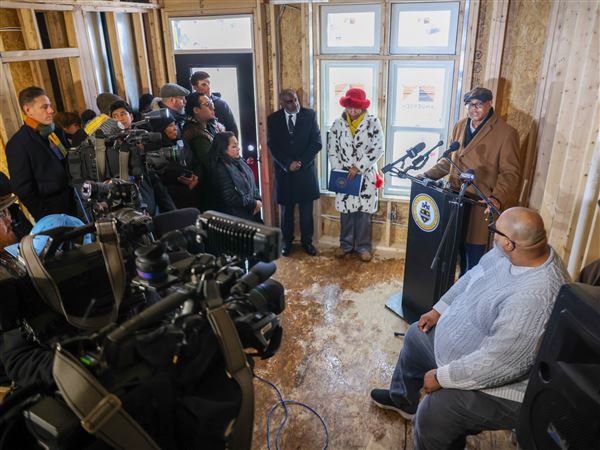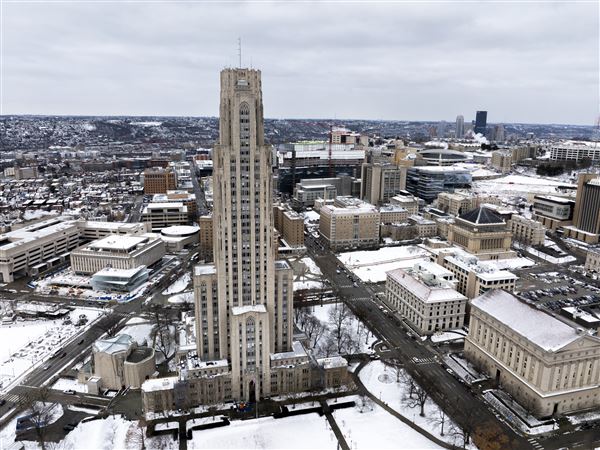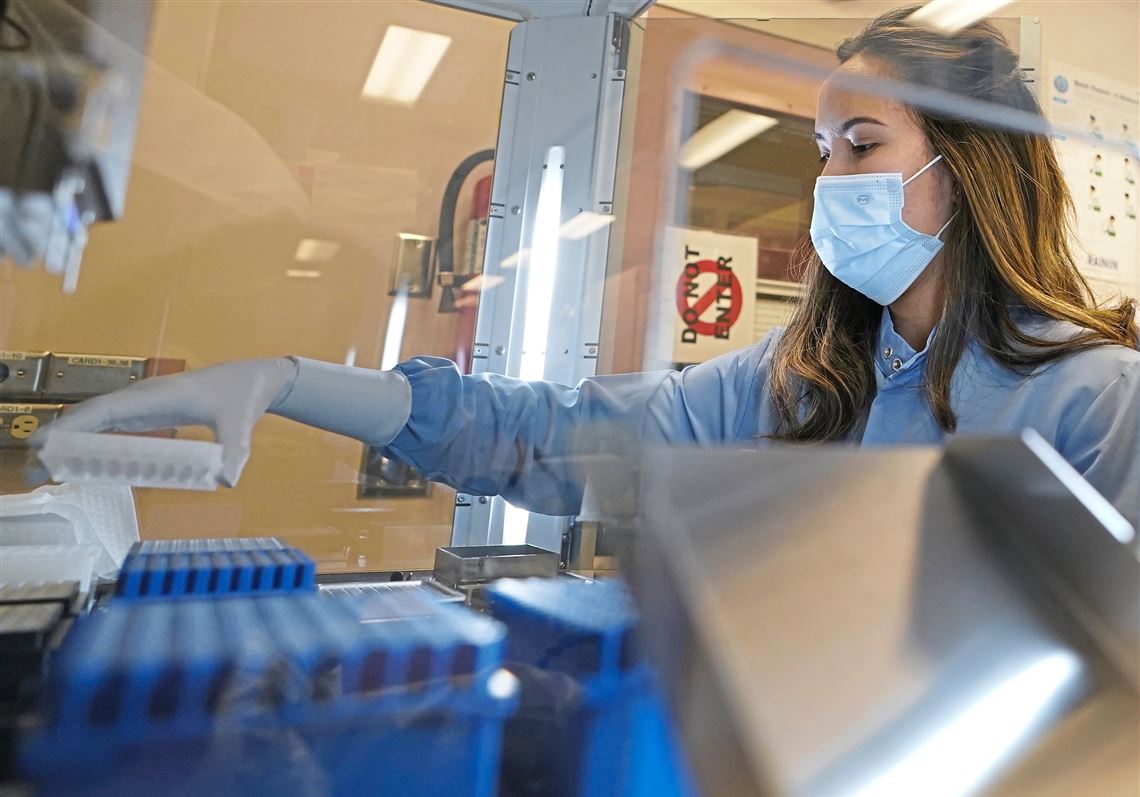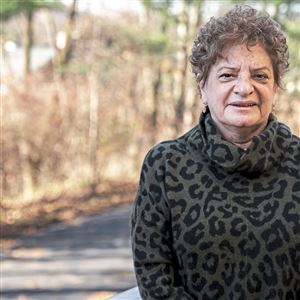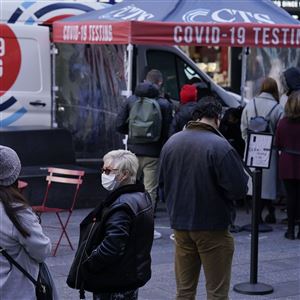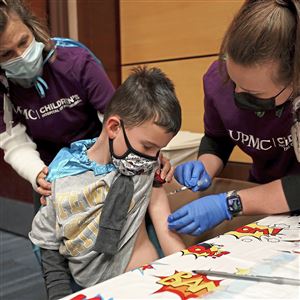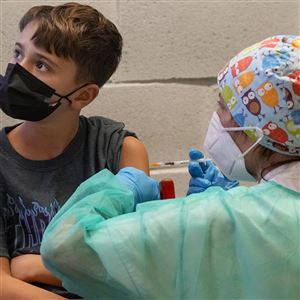As the highly contagious omicron variant of the coronavirus spreads throughout the United States, Pennsylvania is lagging behind in its ability to detect cases caused by the new strain.
As of Thursday, only one case of omicron has been identified in Pennsylvania — in Philadelphia — but that may be because the state is sequencing so few samples from patients who test positive for the virus. In recent months, Pennsylvania has been one of the states doing the least amount of sequencing per positive cases. Pennsylvania and six other states — Alabama, Kentucky, Missouri, Ohio, Oklahoma and South Dakota — have the lowest rates over the last 90 days, having each sequenced and reported fewer than 3% of its COVID-19 cases, according to the open-source website GISAID.
While the delta variant still accounts for the majority of COVID-19 cases in Pennsylvania and elsewhere across the country, omicron will likely outpace delta and become the dominant strain at some point in January, said Dr. Anthony Fauci, director of the National Institute of Allergy and Infectious Diseases, during a Dec. 16 event held by the U.S. Chamber of Commerce Foundation. Omicron currently makes up an estimated 3% of cases nationally. With COVID-19 cases once again rising in Western Pennsylvania, it’s unclear how many infections may involve the new omicron variant.
“We use sequencing to track these variants and also to study transmission — how the virus is being spread from person to person,” Dr. Lee Harrison, professor of infectious diseases and epidemiology at the University of Pittsburgh, said in an interview.
Tracking which variants are causing disease is also important for understanding whether vaccines and treatments against COVID-19 are still working. Early data shows that our current vaccines, as well as monoclonal antibodies treatments, may be less effective against omicron.
Standard PCR and antigen tests are used to determine whether a person is infected with SARS-CoV-2, the virus that causes COVID-19, but they can’t tell what variant someone has. For that, you need a more complex type of test called sequencing, which provides a readout of an organism’s entire genetic code. SARS-CoV-2’s genetic code is about 30,000 letters long (by comparison, the human genome is 6 billion letters long).
Sequencing allows scientists to compare one genome to another in order to spot differences. When enough differences or mutations in the virus’s genetic code are found, scientists may identify that as a variant. The omicron variant has dozens of mutations — essentially misspellings — in its 30,000-letter genetic code that change the behavior of the virus.
Sequencing can only be performed on specialized sequencing machines, whereas PCR and antigen are standard tests performed by most labs. Sequencing the SARS-CoV-2 virus takes about 40 to 60 hours, said Dr. Harrison, who runs a sequencing lab at Pitt.
“This type of genomic surveillance is really important to understand exactly what variants are causing disease in the population,” said Dr. Harrison, whose lab conducts sequencing mainly for research purposes.
Because of the time and equipment needed to sequence SARS-CoV-2 samples, only a portion of positive cases are sequenced in Pennsylvania and around the country. UPMC says it does not routinely sequence patient samples because knowing if they have delta or omicron doesn’t change clinical treatment.
Overall, only about 2.4% of Pennsylvania’s nearly 1.9 million total confirmed coronavirus cases have been sequenced, according to CDC data last updated on Dec. 14. By comparison, neighboring West Virginia has sequenced 8.6% and Maryland has sequenced about 6.5%.
Up until this summer, Pennsylvania did not have the resources to sequence SARS-CoV-2 samples internally, Maggi Barton, a spokeswoman for the Pennsylvania Department of Health, said in an email. Before that, the CDC and labs it contracts with performed SARS-CoV-2 sequencing for the state.
In July, Pennsylvania began doing its own sequencing at its state public health lab in Exton after receiving $7.1 million in federal funds from a Biden administration initiative to boost the country’s ability to track emerging variants. Currently, Pennsylvania can sequence at least 64 samples of SARS-CoV-2 a week, according to Ms. Barton. In addition, the state health department is shipping at least 36 samples every other week to the CDC as part of the agency’s national surveillance program.
“The Department of Health continues to stay alert and build capacity by training staff and procuring additional instrumentations as COVID-19 variants continue to emerge,” Ms. Barton said. The state lab also is hiring additional laboratory scientists to help increase its sequencing capacity.
Kelly Wroblewski, director of infectious diseases at the Association of Public Health Laboratories, said in a Dec. 8 briefing with reporters that staffing issues in sequencing labs remain a problem across the country.
Nationally, between 5 to10% of positive COVID-19 samples are being sequenced, up from less than 1% early in the pandemic. While that is an improvement, experts say more sequencing would allow public health officials to better understand how omicron and other variants are spreading.
“We would like to see somewhere on the order of 15 to 30 percent,” said Dr. Celine Gounder, an epidemiologist and infectious diseases specialist at New York University, in an interview. “We’ve dramatically ramped up the volume of testing, but we're not quite where we need to be and it's still a bit patchy across the country.”
The number of positive cases being sequenced varies greatly from state to state. For instance, Vermont has sequenced 22% of its COVID-19 cases, Wyoming has sequenced nearly 21% and Colorado has sequenced nearly 13%, according to CDC data.
Some states had sequencing capabilities before the COVID-19 pandemic hit the United States in early 2020, allowing them to adapt quickly and start sequencing SARS-CoV-2 samples from patients.
For instance, Minnesota’s public health lab, which has sequenced about 9% of cases, has been doing sequencing “in full force” since 2016.
“That allowed us to actually start sequencing for SARS-CoV-2 about a month after our first positive case was detected in March of 2020,” Myra Kunas, interim division director at Minnesota Department of Health’s Public Health Lab, said in the Dec. 8 briefing.
While delta still dominates, the CDC says omicron is quickly gaining ground. Dr. Harrison said it's only a matter of time before omicron is detected in Western Pennsylvania. With limited sequencing, it could already be circulating here. “I’m certain it'll be uncovered relatively soon.”
Emily Mullin is a freelance health reporter.
First Published: December 17, 2021, 5:15 p.m.
Updated: December 17, 2021, 5:26 p.m.
